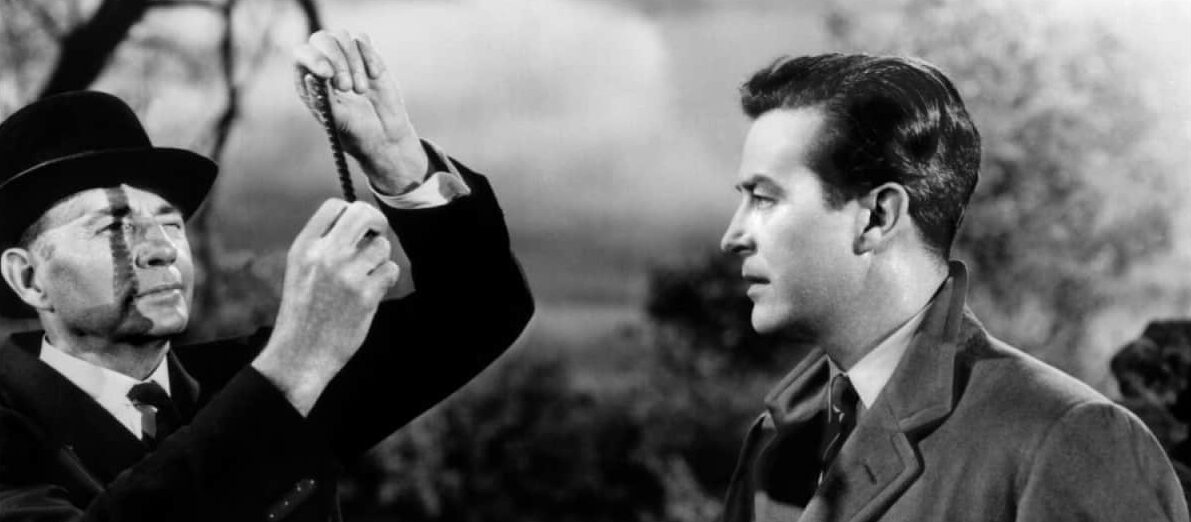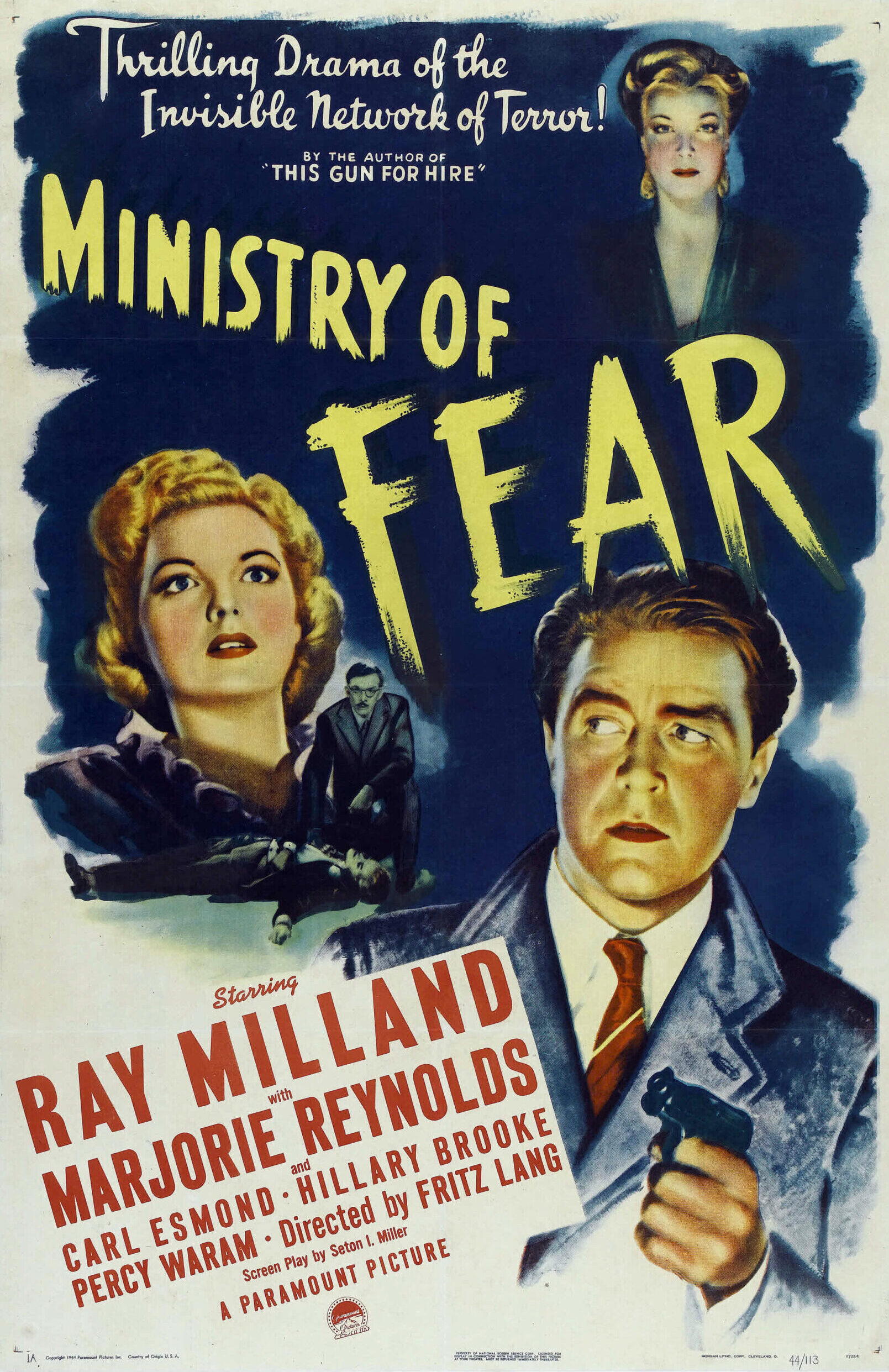

“Aren’t you afraid of the police?”
“When they’re nearby, yes.”
After turning down an offer from Joseph Goebbels to put his considerable filmmaking talents toward furthering the Nazi cause, Fritz Lang fled Germany for the United States by way of Paris. Or so the story goes (evidence suggests it’s a little more complicated than the born storyteller’s preferred embellished version).
Though primarily working on genre pictures during his extremely prolific stint in Hollywood, which only occasionally produced films approaching the stature of his earlier monumental German works (Metropolis, M, The Testament of Dr. Mabuse), the director helmed a handful of explicitly anti-Nazi themed thrillers in the ‘40s. Among them is a stylish propagandistic noir called Ministry of Fear starring Ray Milland and Marjorie Reynolds. A supernaturally-tinged, WWII-set noir, Lang’s film streamlines a popular Graham Greene novel about a man recently released from an asylum who finds himself accidentally enmeshed in an elaborate Nazi conspiracy when he unwittingly intercepts a handoff of secret intel.
On his first night of freedom, he happens upon a small town fair where he visits a soothsayer and wins a cake by correctly guessing its weight. There’s a sublime, surreal moment when everyone at the gathering ceases their activities and the sound drops out as he accepts the package—one of several sequences that embrace the bizarre and suggest the protagonist is trapped in a nightmarish realm rather than a real place. His departure coincides with the arrival of the intended recipient (Dan Duryea), a man who will show up later under two different names and also dial a rotary phone with a pair of absurdly large scissors. Boarding a train for London, he soon finds himself beset by a blind vagrant who steals the cake and darts off into a nearby field where he’s obliterated by a German artillery shell. Sloshed private investigators (Erskine Sanford), femme fatales (Hillary Brooke), police detectives (Percy Waram), séances, aliases, faked deaths, suicides, and false front charity organizations factor into the ensuing, Kafkaesque storyline that bears a passing resemblance to The 39 Steps and other wrong-place-wrong-time Hitchcock thrillers.
Lang’s restrained Expressionism of shadows and skewed frames—often cited as integral to the emergence of the film noir language—is used to accentuate the protagonist’s increasing senses of creeping dread and wild neurosis, effectively propelling the plot forward. To wit, at no point do we question the man’s desire to uncover the mystery, even though the entire story might have fizzled if he allowed himself to forget the odd behavior of the cake thief. Instead, he contacts the head of the charity (Carl Esmond) and initiates the rest of the story.
Much less sophisticated (morally and narratively) than Greene’s novel, and not quite living up to its otherwise impressive pedigree, Ministry of Fear is nevertheless a crackling paranoid thriller notable for its Blitz-era setting, Lang’s atmospheric stylizations, and a handful of terrifically memorable sequences.